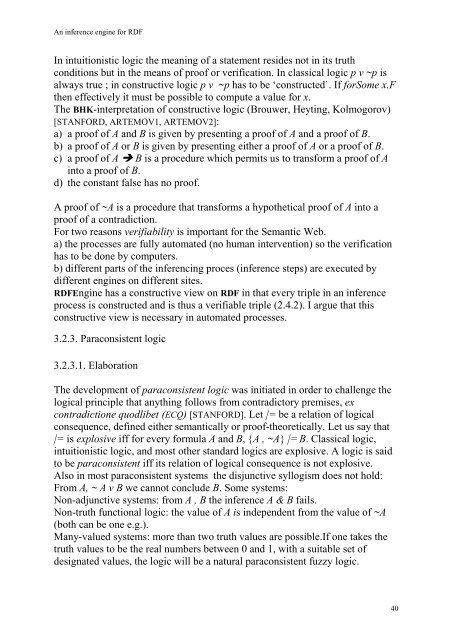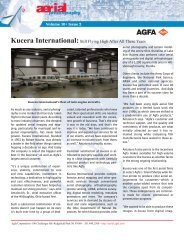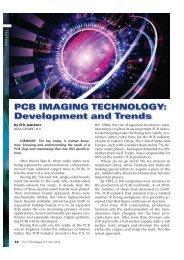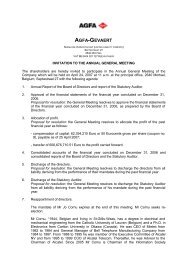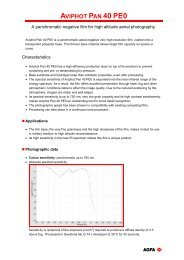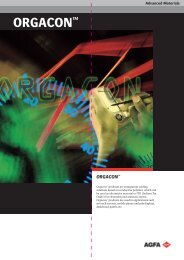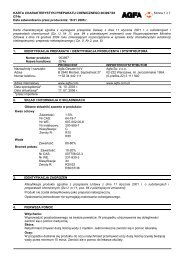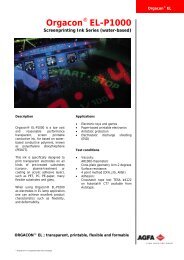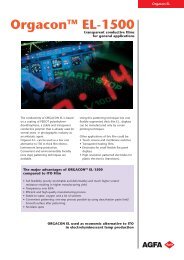An inference engine for RDF - Agfa
An inference engine for RDF - Agfa
An inference engine for RDF - Agfa
Create successful ePaper yourself
Turn your PDF publications into a flip-book with our unique Google optimized e-Paper software.
<strong>An</strong> <strong>inference</strong> <strong>engine</strong> <strong>for</strong> <strong>RDF</strong><br />
In intuitionistic logic the meaning of a statement resides not in its truth<br />
conditions but in the means of proof or verification. In classical logic p v ~p is<br />
always true ; in constructive logic p v ~p has to be ‘constructed’ . If <strong>for</strong>Some x.F<br />
then effectively it must be possible to compute a value <strong>for</strong> x.<br />
The BHK-interpretation of constructive logic (Brouwer, Heyting, Kolmogorov)<br />
[STANFORD, ARTEMOV1, ARTEMOV2]:<br />
a) a proof of A and B is given by presenting a proof of A and a proof of B.<br />
b) a proof of A or B is given by presenting either a proof of A or a proof of B.<br />
c) a proof of A Î B is a procedure which permits us to trans<strong>for</strong>m a proof of A<br />
into a proof of B.<br />
d) the constant false has no proof.<br />
A proof of ~A is a procedure that trans<strong>for</strong>ms a hypothetical proof of A into a<br />
proof of a contradiction.<br />
For two reasons verifiability is important <strong>for</strong> the Semantic Web.<br />
a) the processes are fully automated (no human intervention) so the verification<br />
has to be done by computers.<br />
b) different parts of the inferencing proces (<strong>inference</strong> steps) are executed by<br />
different <strong>engine</strong>s on different sites.<br />
<strong>RDF</strong>Engine has a constructive view on <strong>RDF</strong> in that every triple in an <strong>inference</strong><br />
process is constructed and is thus a verifiable triple (2.4.2). I argue that this<br />
constructive view is necessary in automated processes.<br />
3.2.3. Paraconsistent logic<br />
3.2.3.1. Elaboration<br />
The development of paraconsistent logic was initiated in order to challenge the<br />
logical principle that anything follows from contradictory premises, ex<br />
contradictione quodlibet (ECQ) [STANFORD]. Let |= be a relation of logical<br />
consequence, defined either semantically or proof-theoretically. Let us say that<br />
|= is explosive iff <strong>for</strong> every <strong>for</strong>mula A and B, {A , ~A} |= B. Classical logic,<br />
intuitionistic logic, and most other standard logics are explosive. A logic is said<br />
to be paraconsistent iff its relation of logical consequence is not explosive.<br />
Also in most paraconsistent systems the disjunctive syllogism does not hold:<br />
From A, ~ A v B we cannot conclude B. Some systems:<br />
Non-adjunctive systems: from A , B the <strong>inference</strong> A & B fails.<br />
Non-truth functional logic: the value of A is independent from the value of ~A<br />
(both can be one e.g.).<br />
Many-valued systems: more than two truth values are possible.If one takes the<br />
truth values to be the real numbers between 0 and 1, with a suitable set of<br />
designated values, the logic will be a natural paraconsistent fuzzy logic.<br />
40


